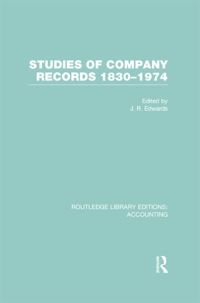


The Minister of Finance has just completed presenting a national budget to the country's parliament for next year. In his budget address he proposed wide ranging proposals aimed at enhancing domestic revenue through introducing new taxes as well as rationalizing the tax administration system. One of his proposals was the revision is the proposal to raise the exempt threshold of PAYE from K3,300 to K4,000. Using the knowledge of taxation that you have acquired in Public Finance, answer the following questions; (a) State and explain the principles of taxation that would be used in evaluating the newly proposed tax system. [25 Marks] (b) Do you think this proposal aimed at increasing disposable income will achieve it's intended objectives? Kindly explain. [15 Marks] Question 2 (a) You are a consultant to the government of Zimbabwe. The government has decided to cut taxes on either apples, bananas, or Yogurt, and it wants your input on which good would be the best choice for a tax cut. It provides you with the following information. What is your recommendation, and why? [15 Marks] Marginal tax revenue (thousands of dollars per $1 additional tax) Marginal deadweight loss (thousands of dollars per $1 additional tax) Sales Good Unit Price (thousands) Unit tax Apples $1 100 $0.10 20, 5 Bananas $2 100 $0.25 30 20 Yogurt $4 50 $0.15 10 20 (b) Luxury goods often have much higher elasticities of demand than do goods purchased by a broad base of people. Why, then, are governments more likely to tax luxuries than these staple" goods? (5) (c) Discuss the Haig-Simons and Musgrave view of an idea tax base. What are the equity implications of each view? [15 Marks) Question 3 Some reasons why resources could be allocated inefficiently by the market are negative externalities and positive externalities. (a) Explain, using graphs, what the problem is in each case, and explain possible solutions to each problem. [10 Marks) (b) All of these problems might be described as arising due to poorly defined property rights. Explain the relationship of property rights to these instances where the market fails to allocate resources efficiently. [5 Marks) (c) Explain how a corrective tax can eliminate the inefficiency caused by a negative externality. Use a graph to assist your explanation. [5 Marks] (d) Why does the optimal tax promote the efficient use of resources? (2. 5 Marks] (e) After the tax is collected, should the money be paid in compensation to those who are harmed by the externality? Explain the pros and cons of compensating those harmed by an externality. [2.5 Marks) The Minister of Finance has just completed presenting a national budget to the country's parliament for next year. In his budget address he proposed wide ranging proposals aimed at enhancing domestic revenue through introducing new taxes as well as rationalizing the tax administration system. One of his proposals was the revision is the proposal to raise the exempt threshold of PAYE from K3,300 to K4,000. Using the knowledge of taxation that you have acquired in Public Finance, answer the following questions; (a) State and explain the principles of taxation that would be used in evaluating the newly proposed tax system. [25 Marks] (b) Do you think this proposal aimed at increasing disposable income will achieve it's intended objectives? Kindly explain. [15 Marks] Question 2 (a) You are a consultant to the government of Zimbabwe. The government has decided to cut taxes on either apples, bananas, or Yogurt, and it wants your input on which good would be the best choice for a tax cut. It provides you with the following information. What is your recommendation, and why? [15 Marks] Marginal tax revenue (thousands of dollars per $1 additional tax) Marginal deadweight loss (thousands of dollars per $1 additional tax) Sales Good Unit Price (thousands) Unit tax Apples $1 100 $0.10 20, 5 Bananas $2 100 $0.25 30 20 Yogurt $4 50 $0.15 10 20 (b) Luxury goods often have much higher elasticities of demand than do goods purchased by a broad base of people. Why, then, are governments more likely to tax luxuries than these staple" goods? (5) (c) Discuss the Haig-Simons and Musgrave view of an idea tax base. What are the equity implications of each view? [15 Marks) Question 3 Some reasons why resources could be allocated inefficiently by the market are negative externalities and positive externalities. (a) Explain, using graphs, what the problem is in each case, and explain possible solutions to each problem. [10 Marks) (b) All of these problems might be described as arising due to poorly defined property rights. Explain the relationship of property rights to these instances where the market fails to allocate resources efficiently. [5 Marks) (c) Explain how a corrective tax can eliminate the inefficiency caused by a negative externality. Use a graph to assist your explanation. [5 Marks] (d) Why does the optimal tax promote the efficient use of resources? (2. 5 Marks] (e) After the tax is collected, should the money be paid in compensation to those who are harmed by the externality? Explain the pros and cons of compensating those harmed by an externality. [2.5 Marks)









